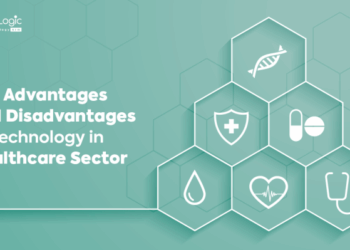Exploring the dynamic landscape of Sustainable Technology Trends for Urban Development, this introduction sets the stage for an enlightening discussion on how innovative technologies are revolutionizing urban spaces. From cutting-edge smart grids to eco-friendly transportation solutions, the future of sustainable cities is brighter than ever.

As we delve deeper into the key sustainable technology trends shaping urban development, we will uncover the transformative impact these advancements have on building greener, cleaner, and more efficient cities for tomorrow.
Sustainable Technology Trends for Urban Development
In today's fast-paced world, sustainable technology plays a crucial role in shaping the future of urban development. These innovative solutions not only help in reducing environmental impact but also contribute to creating more livable and resilient cities.
Key Sustainable Technology Trends
- Smart Grids: Smart grids enable efficient energy distribution, reducing wastage and promoting the use of renewable energy sources.
- Green Buildings: Incorporating green building practices such as solar panels, green roofs, and energy-efficient designs help in reducing carbon footprint and energy consumption.
- Urban Farming: Utilizing vertical farming and rooftop gardens in urban areas promotes local food production, reduces food miles, and enhances food security.
Benefits of Sustainable Technologies in Urban Development
- Environmental Impact: Sustainable technologies help in reducing greenhouse gas emissions, improving air quality, and conserving natural resources.
- Resilience: Implementing these technologies enhances the resilience of cities against climate change and natural disasters.
- Economic Growth: Sustainable urban development attracts investments, creates green jobs, and boosts the local economy.
Successful Implementation Examples
- The city of Copenhagen, Denmark, has successfully integrated smart grid technologies to achieve its goal of becoming carbon neutral by 2025.
- Singapore's Marina Bay Sands is a prime example of a green building with its iconic design incorporating sustainable features like rainwater harvesting and energy-efficient lighting.
- New York City's Brooklyn Grange rooftop farm is a successful urban farming initiative that produces over 50,000 pounds of organic produce annually.
Smart Grids and Energy Management
Smart grids play a crucial role in optimizing energy distribution within urban settings, offering numerous benefits in terms of efficiency and sustainability.
Role of Smart Grids
Smart grids are advanced systems that utilize digital technology to monitor and manage the flow of electricity. Unlike traditional energy management systems, smart grids allow for real-time monitoring, control, and communication between energy producers, distributors, and consumers. This level of automation and connectivity enables more efficient energy distribution and consumption.
- Smart grids can detect and respond to changes in energy demand, helping to balance supply and demand more effectively.
- They also facilitate the integration of renewable energy sources, such as solar and wind power, into the grid, reducing reliance on fossil fuels.
- By providing consumers with real-time data on their energy usage, smart grids empower individuals to make informed decisions about their consumption habits, leading to potential cost savings and reduced environmental impact.
Benefits of Smart Grids
Smart grids offer several advantages over traditional energy management systems, including:
- Improved reliability and resilience of the grid, reducing the risk of blackouts and power outages.
- Enhanced energy efficiency, resulting in reduced waste and lower overall energy consumption.
- Lower carbon footprint due to increased use of renewable energy sources and optimized energy distribution.
Green Building Solutions
Green building solutions encompass innovative technologies that focus on sustainable urban development by reducing environmental impact and enhancing energy efficiency. These solutions play a crucial role in creating healthier and more efficient buildings for residents and the environment.
Innovative Green Building Technologies
- Solar Panels: Solar panels are a popular choice for green buildings as they harness renewable energy from the sun to power the building.
- Green Roofs: Green roofs are covered with vegetation, providing insulation, reducing heat absorption, and improving air quality.
- Energy-Efficient HVAC Systems: High-efficiency HVAC systems optimize energy consumption and reduce carbon emissions.
Benefits of Green Buildings
- Energy Efficiency: Green buildings consume less energy, resulting in lower utility bills and reduced carbon footprint.
- Environmental Impact: Green buildings help mitigate climate change by reducing greenhouse gas emissions and promoting sustainable practices.
- Health and Well-being: Green buildings improve indoor air quality, leading to healthier living environments for occupants.
Case Studies of Successful Green Building Solutions
- Copenhagen, Denmark: The city has embraced green building practices, leading to a significant reduction in energy consumption and carbon emissions
.
- Singapore: Singapore has implemented green building initiatives such as mandatory Green Mark certification, resulting in a more sustainable built environment.
- Portland, Oregon: Portland has incentivized green building projects through tax credits and grants, fostering a culture of sustainability in urban development.
Urban Mobility and Transportation
Urban mobility and transportation are crucial aspects of sustainable urban development. By exploring sustainable transportation options and leveraging technology, cities can improve efficiency, reduce emissions, and enhance the overall quality of life for residents.
Electric Vehicles and Public Transit Systems
Electric vehicles (EVs) and public transit systems play a key role in reducing carbon emissions and promoting eco-friendly transportation. EVs offer a clean alternative to traditional gasoline-powered cars, while public transit systems help reduce the number of individual vehicles on the road, decreasing traffic congestion and air pollution.
- Electric vehicles are powered by electricity, which is cleaner and more sustainable than fossil fuels. By promoting the adoption of EVs, cities can significantly reduce their carbon footprint and improve air quality.
- Public transit systems, such as buses, trains, and subways, offer efficient and cost-effective transportation options for urban residents. By investing in public transit infrastructure and services, cities can encourage more people to use sustainable modes of transportation.
Improving Traffic Flow and Reducing Congestion
Technology plays a crucial role in improving traffic flow and reducing congestion in urban areas. Smart traffic management systems, real-time data analytics, and intelligent transportation solutions can help optimize traffic flow, reduce travel times, and minimize the environmental impact of congestion.
- Smart traffic management systems use sensors, cameras, and data analytics to monitor traffic patterns and adjust signal timings in real time. By optimizing traffic flow, these systems can reduce congestion, shorten travel times, and improve overall transportation efficiency.
- Intelligent transportation solutions, such as dynamic routing algorithms and connected vehicle technology, help drivers navigate urban areas more efficiently. By providing real-time traffic information and alternative routes, these solutions can reduce congestion and emissions, resulting in a more sustainable transportation system.
Environmental Advantages of Eco-Friendly Transportation
Promoting eco-friendly transportation in cities has numerous environmental advantages, including reducing greenhouse gas emissions, improving air quality, and mitigating the impacts of climate change. By encouraging the use of electric vehicles, public transit systems, and other sustainable transportation options, cities can create cleaner, healthier, and more sustainable urban environments for all residents.
- Reducing greenhouse gas emissions: Electric vehicles produce zero tailpipe emissions, helping to mitigate the impacts of climate change and reduce air pollution in urban areas.
- Improving air quality: By promoting sustainable transportation options, cities can reduce the emissions of harmful pollutants, such as nitrogen oxides and particulate matter, which contribute to poor air quality and respiratory health issues.
Waste Management Technologies
In today's rapidly growing urban environments, waste management has become a critical aspect of ensuring sustainability and maintaining the overall cleanliness and health of cities. Advanced waste management technologies play a crucial role in effectively handling waste, reducing environmental impact, promoting recycling, and recovering valuable resources.
Advanced Waste Management Technologies
- Smart Bins: Smart waste bins equipped with sensors and IoT technology can optimize waste collection routes, reduce overflowing bins, and improve overall efficiency.
- Waste-to-Energy Plants: These facilities convert waste into energy through processes like incineration or anaerobic digestion, reducing landfill usage and generating clean electricity.
- Recycling Robots: Automated robots are used in recycling facilities to sort and segregate recyclable materials efficiently, increasing recycling rates and reducing contamination.
Benefits of Efficient Waste Management
- Waste Reduction: Advanced technologies help in minimizing the amount of waste generated, leading to a decrease in landfill usage and environmental pollution.
- Recycling Promotion: By enhancing recycling processes and capabilities, these technologies encourage the reuse of materials, conserving resources and reducing the need for raw materials.
- Resource Recovery: Efficient waste management allows for the recovery of valuable resources from waste streams, contributing to a circular economy and sustainable resource utilization.
Impact on Urban Environments
- Improved Cleanliness: Effective waste management technologies contribute to cleaner streets, reduced littering, and a more aesthetically pleasing urban environment.
- Health Benefits: Proper waste disposal and recycling practices help in minimizing health risks associated with waste accumulation, air pollution, and water contamination, ensuring a healthier living environment for urban residents.
Final Thoughts
In conclusion, Sustainable Technology Trends for Urban Development are not just concepts for the future; they are the building blocks of a more sustainable and environmentally conscious urban landscape. By embracing these technologies, cities can pave the way for a brighter and greener tomorrow.
Helpful Answers
How do sustainable technology trends contribute to urban development?
These trends contribute by enhancing energy efficiency, reducing carbon footprint, and promoting eco-friendly practices in urban areas.
What are some examples of successful implementation of sustainable technology in urban areas?
Examples include smart grids for optimized energy distribution, green building solutions for energy-efficient structures, and sustainable transportation options like electric vehicles.
Why is waste management technology crucial for urban sustainability?
Efficient waste management technologies help in waste reduction, recycling, and resource recovery, leading to cleaner and healthier urban environments.
 As we delve deeper into the key sustainable technology trends shaping urban development, we will uncover the transformative impact these advancements have on building greener, cleaner, and more efficient cities for tomorrow.
As we delve deeper into the key sustainable technology trends shaping urban development, we will uncover the transformative impact these advancements have on building greener, cleaner, and more efficient cities for tomorrow.











